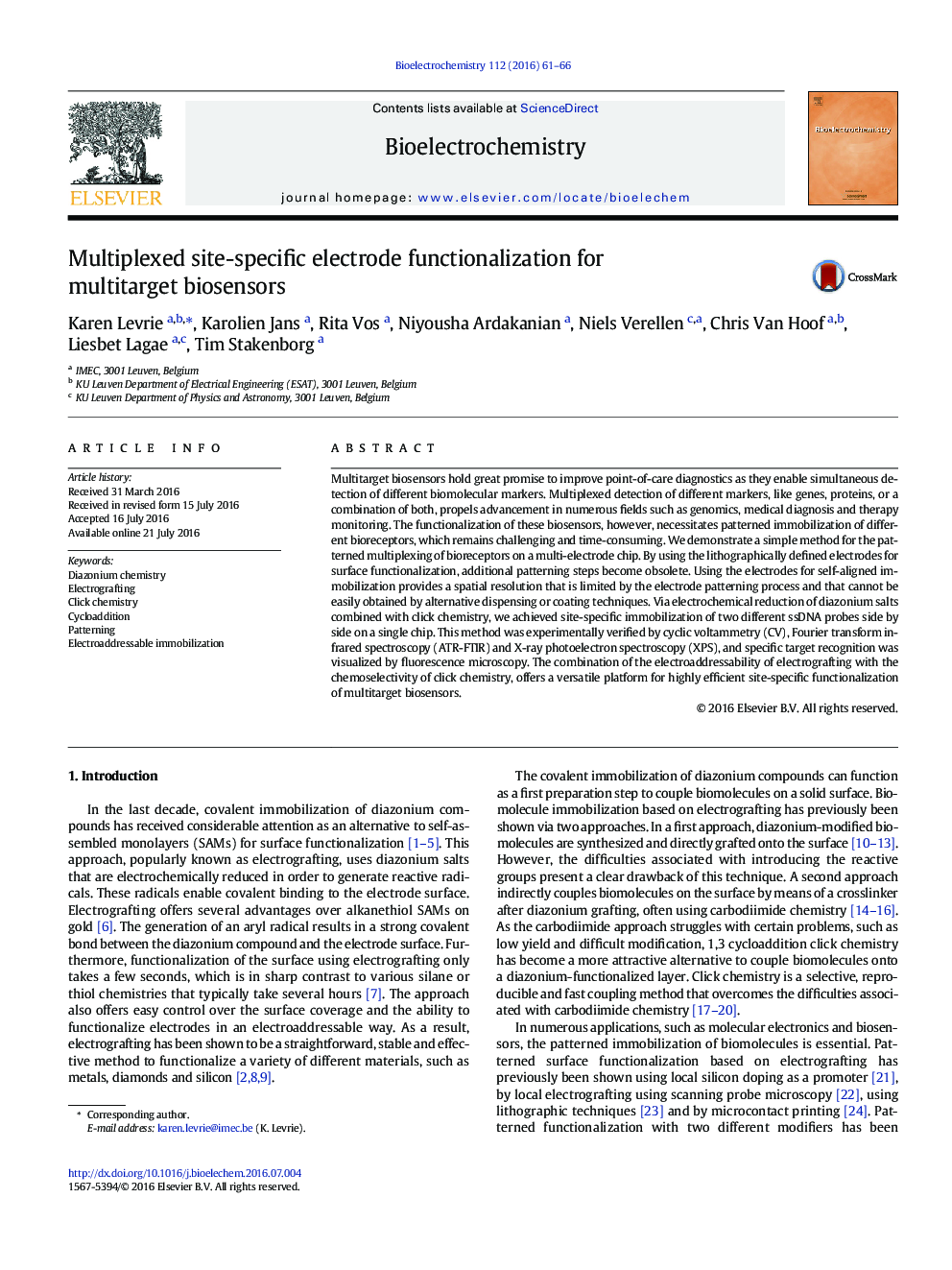| Article ID | Journal | Published Year | Pages | File Type |
|---|---|---|---|---|
| 1267761 | Bioelectrochemistry | 2016 | 6 Pages |
•4-ethynylaniline and 4-azidoaniline are electrografted on neighboring electrodes.•The electrodes are used for self-aligned deposition, without additional patterning.•Site-specific multiplexing of alkyne- and azide-modified DNA probes is demonstrated.•Site-specificity is confirmed via CV, ATR-FTIR, XPS and fluorescence microscopy.
Multitarget biosensors hold great promise to improve point-of-care diagnostics as they enable simultaneous detection of different biomolecular markers. Multiplexed detection of different markers, like genes, proteins, or a combination of both, propels advancement in numerous fields such as genomics, medical diagnosis and therapy monitoring. The functionalization of these biosensors, however, necessitates patterned immobilization of different bioreceptors, which remains challenging and time-consuming. We demonstrate a simple method for the patterned multiplexing of bioreceptors on a multi-electrode chip. By using the lithographically defined electrodes for surface functionalization, additional patterning steps become obsolete. Using the electrodes for self-aligned immobilization provides a spatial resolution that is limited by the electrode patterning process and that cannot be easily obtained by alternative dispensing or coating techniques. Via electrochemical reduction of diazonium salts combined with click chemistry, we achieved site-specific immobilization of two different ssDNA probes side by side on a single chip. This method was experimentally verified by cyclic voltammetry (CV), Fourier transform infrared spectroscopy (ATR-FTIR) and X-ray photoelectron spectroscopy (XPS), and specific target recognition was visualized by fluorescence microscopy. The combination of the electroaddressability of electrografting with the chemoselectivity of click chemistry, offers a versatile platform for highly efficient site-specific functionalization of multitarget biosensors.
Graphical abstractMultiplexed site-specific electrode functionalization was successfully demonstrated on neighboring electrodes by combining electrografting of diazonium compounds with click chemistry.Figure optionsDownload full-size imageDownload as PowerPoint slide
